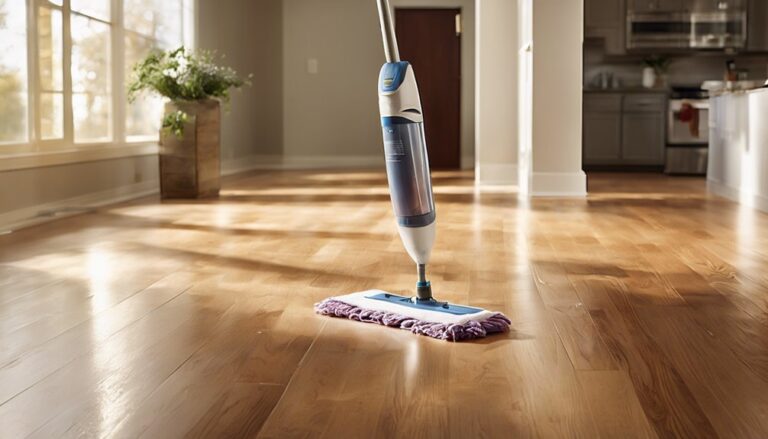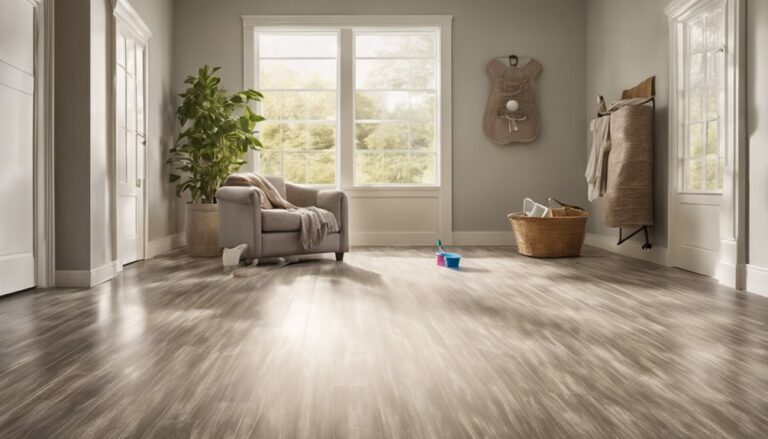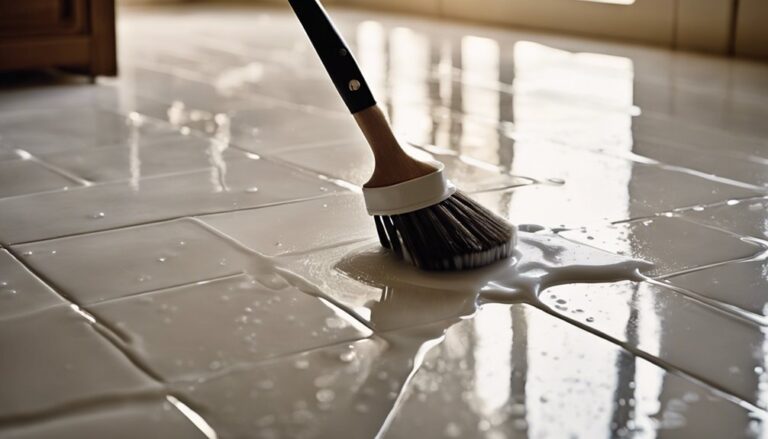Engineered wood flooring is a sophisticated flooring option that combines a top veneer of hardwood with a sturdy core made of high-density fiberboard or plywood. This multi-layer construction enhances stability and durability, making it less susceptible to warping from humidity and temperature changes. It offers an eco-friendly alternative to solid hardwood by using less wood while still delivering a premium look. Installation is straightforward with methods like nail-down, glue-down, or floating, catering to different preferences. If you want to understand the specifics of installation and maintenance, there's plenty more to explore.
Definition of Engineered Wood Flooring
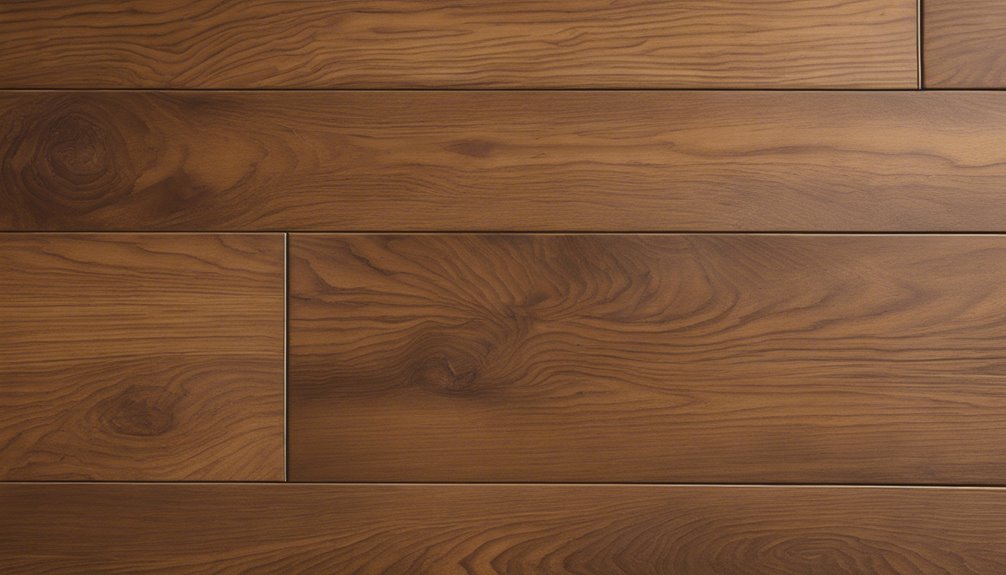
Engineered wood piso is a popular choice in modern interior design, combining the beauty of natural wood with enhanced durability and stability. It consists of multiple layers, with a top veneer of real hardwood over a core made of high-density fiberboard or plywood. This construction method addresses sustainability concerns, as it utilizes less solid wood than traditional flooring. You'll find engineered wood is designed to withstand fluctuations in humidity and temperature, making it suitable for various environments. Cost considerations are also favorable; engineered wood often presents a more budget-friendly alternative to solid hardwood while still providing a premium aesthetic. Ultimately, engineered wood flooring offers a practical solution without compromising on style or environmental responsibility.
Construction Process
In the construction process of engineered wood flooring, you'll see a layered structure designed for stability and performance. Various manufacturing techniques, such as lamination and bonding, play essential roles in creating these layers. Additionally, finishing and treatment methods enhance durability and aesthetic appeal, ensuring your flooring meets both functional and visual standards.
Layered Structure Overview
The layered structure of engineered wood flooring plays a crucial role in its durability and stability. Typically, it consists of multiple layers, each designed for specific purposes. The top layer, or veneer, is made from high-quality hardwood, providing aesthetic appeal and a natural look. Beneath it, several core layers, often made of plywood or high-density fiberboard, enhance strength and resistance to moisture. This layer composition contributes to the overall structure benefits, such as reduced expansion and contraction compared to solid wood. Additionally, the cross-grain construction of these layers helps minimize warping, making engineered wood ideal for various environments. Understanding this layered structure can help you appreciate the durability and versatility of engineered wood flooring in your space.
Manufacturing Techniques Explained
Five key manufacturing techniques contribute to the construction of engineered wood flooring, guaranteeing its quality and performance. First, precise material selection is critical; manufacturers choose high-quality wood veneers and durable core materials for stability. Next, advanced cutting techniques allow for uniform plank sizes, enhancing installation efficiency. Third, adhesive application is crucial, as it bonds layers together, providing structural integrity. Fourth, the pressing process involves applying heat and pressure to solidify the bond of layers, which is fundamental for durability. Finally, the curing phase guarantees that adhesives set properly, maximizing the lifespan of the flooring. By understanding these manufacturing processes, you can appreciate the craftsmanship behind engineered wood flooring and make informed choices for your space.
Finishing and Treatment Methods
Several finishing and treatment methods play a vital role in enhancing the appearance, durability, and performance of engineered wood flooring. You'll find a variety of finishing techniques, including urethane, oil, and water-based finishes, each offering unique benefits. Urethane finishes provide a robust protective layer, while oil finishes penetrate the wood for a natural look.
When it comes to treatment options, consider options like sanding and sealing, which can refresh your floor's surface and extend its lifespan. Additionally, some products include stain treatments to achieve your desired color. Remember, the right finishing technique and treatment option not only elevates the aesthetic but also protects against wear and tear, ensuring your flooring remains beautiful and functional for years to come.
Advantages of Engineered Wood
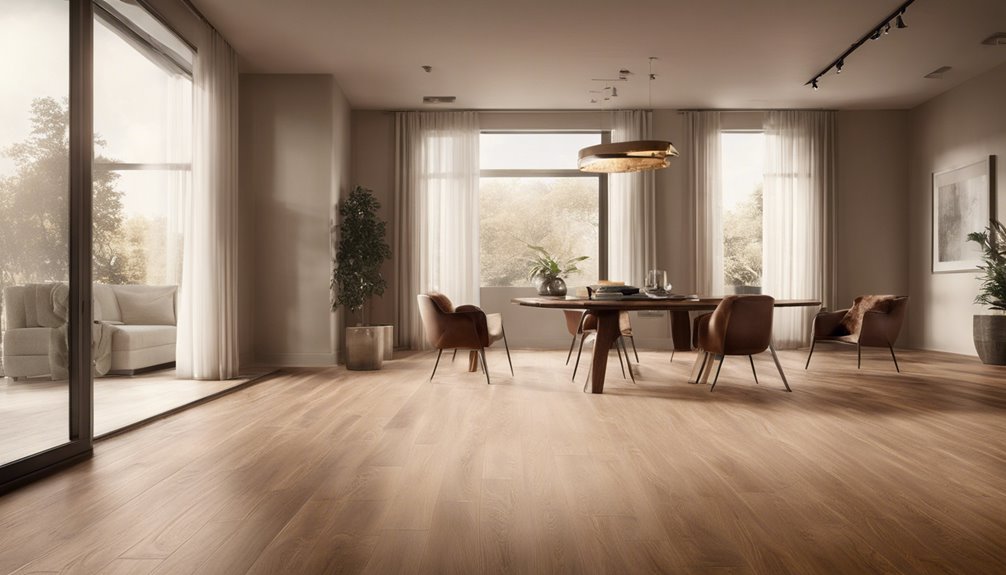
Engineered wood offers exceptional durability and stability, making it suitable for various environments. You'll also appreciate the easy installation process, which can save you time and labor costs. Plus, with a wide range of aesthetic options, it allows for design flexibility that complements any interior style.
Durability and Stability
One of the key advantages of engineered wood flooring is its remarkable durability and stability, making it an ideal choice for various environments. Unlike traditional solid wood, engineered wood is constructed with multiple layers, providing enhanced resistance to moisture and temperature fluctuations. This multi-layer design mitigates the impact factors that often lead to warping or cracking. You'll find that engineered wood can withstand the rigors of daily life, whether it's in high-traffic areas or rooms with changing humidity levels. Additionally, environmental considerations play a role; many engineered wood products utilize sustainable materials, making them a more eco-friendly option. All these aspects contribute to a flooring solution that not only looks great but stands the test of time.
Proceso de instalación fácil
The advantages of engineered wood flooring extend beyond its durability and stability; the easy installation process is another significant benefit. You can install it yourself with minimal experience, making it accessible for DIY enthusiasts. Using simple installation tools like a tapping block, spacers, and a saw, you can achieve a professional look without the need for costly labor.
Beginner tips include measuring your space accurately and acclimating the planks before installation to prevent warping. The click-lock system commonly found in engineered wood allows for swift assembly, reducing installation time and hassle. This freedom to customize your space without extensive expertise is a significant advantage, allowing you to enjoy your newly finished floor sooner than you might expect.
Aesthetic Versatility Options
While exploring flooring options, you'll find that engineered wood offers unmatched aesthetic versatility, allowing you to choose from a wide range of styles, finishes, and colors. This flooring type can mimic the look of solid hardwood, enabling you to achieve the desired aesthetic without compromising on quality. You can experiment with various color combinations that align with current design trends, creating a cohesive look tailored to your space. Whether you prefer a rustic charm or a sleek modern vibe, engineered wood can adapt to your vision. Additionally, its layered construction allows for finishes that resist wear while maintaining visual appeal. This flexibility guarantees you can express your style freely, making engineered wood an ideal choice for any design preference.
Comparison to Solid Hardwood
When considering flooring options, it's essential to recognize the distinct differences between engineered wood flooring and solid hardwood. Engineered comparisons reveal that engineered wood consists of multiple layers, offering enhanced stability and resistance to moisture, making it an ideal choice for varying climates. In contrast, solid hardwood is a single piece, which can expand and contract with humidity, potentially leading to warping. While both options provide aesthetic appeal, engineered wood often presents more affordable hardwood alternatives, allowing for a wider variety of styles and finishes. Additionally, engineered flooring typically requires less maintenance over time, freeing you from frequent refinishing. Ultimately, the choice between these two types hinges on your specific needs, lifestyle, and environmental considerations, ensuring you make an informed decision.
Métodos de instalación

Three primary installation methods exist for engineered wood flooring: nail-down, glue-down, and floating. Each method has its own installation tools and tips to guarantee a successful project.
| Método de instalación | Características principales |
|---|---|
| Nail-Down | Requires nails and a nail gun; best for secure, long-lasting floors. |
| Glue-Down | Uses adhesive; ideal for concrete subfloors. |
| Floating | No adhesive or nails needed; planks click together, allowing for easy removal and replacement. |
When choosing your method, consider your subfloor type and personal preference. For nail-down, have a hammer and a pneumatic nailer ready. With glue-down, make certain you have the right adhesive. For floating, make sure to follow the manufacturer's installation tips for the best results.
Consejos de mantenimiento
Proper maintenance is essential for preserving the beauty and durability of your engineered wood flooring. To keep it looking its best, adopt effective cleaning techniques. Regularly sweep or vacuum to remove dust and debris, and use a damp mop with a pH-balanced cleaner to avoid water damage. Be cautious with excess moisture; it can warp the wood.
Your maintenance frequency should be tailored to your home's traffic. For high-traffic areas, aim for weekly cleaning, while low-traffic spaces can be maintained bi-weekly. Additionally, place mats at entryways to minimize dirt and grit. Finally, consider applying a protective finish every few years to enhance resilience. Following these tips guarantees your flooring remains stunning for years to come.
Preguntas frecuentes
Can Engineered Wood Flooring Be Refinished Like Solid Hardwood?
You might think refinishing engineered wood flooring is as easy as pie, but it's a bit more complex. While you can refinish it, the success of the refinishing process hinges on the wood thickness of the veneer layer. If it's thick enough—typically 2-5 millimeters—you're in luck! Just remember, excessive sanding can damage the flooring, so it's essential to proceed cautiously to maintain its integrity and appearance.
Is Engineered Wood Flooring Suitable for Basements?
If you're considering engineered wood flooring for your basement, it's a solid choice due to its moisture resistance. Unlike solid hardwood, engineered wood can handle the humid environment often found in basements. You can choose various installation methods, like floating or glue-down, depending on your space. Just guarantee the subfloor is properly prepared to prevent moisture issues. With the right precautions, engineered wood can provide a stylish and durable flooring solution for your basement.
What Is the Lifespan of Engineered Wood Flooring?
Imagine your best friend's home, where their engineered wood flooring still looks stunning after a decade. With proper installation techniques and regular maintenance tips, you can expect a lifespan of 20 to 30 years. Guarantee the planks are installed correctly; this enhances durability. Regular cleaning and avoiding excessive moisture will also help. By taking these steps, you can enjoy a beautiful, resilient floor that stands the test of time, giving you the freedom to live comfortably.
Does Engineered Wood Flooring Emit Volatile Organic Compounds (VOCS)?
Yes, engineered wood flooring can emit volatile organic compounds (VOCs), which may impact indoor air quality. However, many manufacturers prioritize flooring safety by using low-VOC adhesives and finishes, reducing potential health risks. It's crucial to choose products certified by reputable organizations to guarantee minimal emissions. By doing so, you can enjoy the aesthetic benefits of engineered wood while maintaining a healthier living environment. Always check for VOC ratings before making your flooring choice.
How Does Humidity Affect Engineered Wood Flooring?
Humidity greatly affects engineered wood flooring, as high moisture levels can lead to expansion, while low humidity may cause contraction. You'll want to prioritize moisture control to maintain the integrity of your flooring. It's crucial to monitor humidity levels in your home, using dehumidifiers or humidifiers as needed. Keeping humidity within a stable range will help prevent warping and prolong the lifespan of your engineered wood flooring, ensuring a beautiful, lasting finish.


